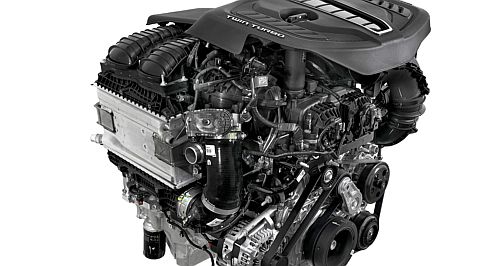Make / Model Search
News - Stellantis - newsStellantis throws its hat in the e-fuels ringAn each-way bet is underway for the multiband group as it investigates e-fuel viability27 Apr 2023 STELLANTIS has, in addition to e-power, jumped on the synthetic fuel (e-fuel) bus presuming to keep combustion engines alive during a transition to electric power.
The multi-brand manufacturer has embarked on a massive e-fuel test program ordering 28 different engine families in its portfolio to be stress tested with synthetic e-fuel.
The move comes at a time when auto executives are looking into a crystal ball trying to decide which way to jump regarding new energy fuels. Electricity is front and centre in the mix, but other options would be causing plenty of head scratching in board rooms around the globe.
Add in various, rules, regulations, legislation and ‘bans’ in different countries and you have a real conundrum on your hands. Vast amounts of money are at stake as well as corporate viability and potentially thousands of (direct and indirect) jobs.
In trying to predict the near future, some companies are mobilising to continue with combustion engines seemingly regardless of cost.
Synthetic e-fuels are an option under consideration for those companies wishing to continue producing combustion engines for the time being.
These synthetic fuels recently won an exemption to the upcoming European ban on combustion engines scheduled for 2035. It was driven by several manufacturers including Porsche and Ferrari much to the chagrin of other companies like Volvo and Mercedes-Benz.
Stellantis says its goal with testing e-fuels is to help accelerate the potential reduction in carbon emissions using the fuels which are made by recapturing carbon emissions already present in the atmosphere and processing it into a fuel source with renewable energy.
GoAuto reported back in the middle of 2022 that Australia stands to benefit from any broad use of e-fuels as Tasmania has been proposed by Highly Innovative Fuels Global (HIF) as a location for e-fuel production. The venture is backed by Porsche with a 12.5 per cent share in the enterprise representing a $A100 million investment.
HIF Australia chief executive officer, Ignacio Hernandez, said the company sought areas that had abundant supplies of renewable energy (notably wind) as well as existing infrastructure for the construction of its production plants.
It has already commenced construction of the Haru Oni pilot plant in Punta Arenas (Chile) and, in addition to Australia, plans to next set up facilities in the United States where construction is expected to start soon.
Production of e-fuels from hydrogen and CO2 using wind energy is expected to start at the Chilean Patagonian facility later this year (2022), our report said. The plant is expected to expand in two stages to around 55 million litres by 2024, and around 550 million litres by 2026.
Porsche is targeting a wholesale price of $US2.00 per litre once production has ramped up, but how much it will cost the consumer will vary based on how governments decide to tax it.
Synthetic e-fuel (methanol-based and including LPG) enables the nearly CO2-neutral operation of combustion engines because the CO2 used to create the fuel is drawn from the atmosphere.
Compared to conventional fossil fuels, which have between 30 and 40 components, synthetic fuels have as few as eight. There are fewer contaminants in e-fuel, so it is better for engines and the environment.
Porsche says it reduces emissions by around 85 per cent compared to that emitted by today’s unleaded.
In a similar fashion to ethanol, e-fuel can also power modern ICE vehicles either on its own, or when blended with fossil fuel-based petrol.
Stellantis’ test program affects vehicles across its 14 brands and close to 30 million engine units going back to 2014 indicating the company is considering retrofitting e-fuel capability to existing engines.
According to US publication TheDrive, Stellantis’ most recent tests, which are in the finalisation stage for petrol- and diesel-powered engines, are meant to gauge important details like power, reliability, and tailpipe emissions.
The publication reports, “The automaker says that by investing in e-fuels, it is potentially ensuring that customers with an existing ICE-powered vehicle will have an affordable, drop-in option to ‘decarbonise’ their vehicles without having to upgrade the fuel system, worry about the EV charging infrastructure, or replace their existing vehicle with a new or used electric car”.
According to the report, Stellantis is already aiming to sell only battery electric cars across all its brands by the end of the decade, but the brand’s CEO, Carlos Tavares, really does not like that idea. The report said that while Mr Tavares remains committed to bringing the company’s brands in compliance with worldwide regulations, it is doing so “kicking and screaming”.
In a similar vein to what recently transpired in the EU, some industry commentators suggest Stellantis’ investment into e-fuels is another soft-handed blow toward regulators pushing for full electrification.
“While we remain steadfast in executing our aggressive electrification strategy, we must also find smart alternatives to address the CO2 emissions for the 1.3 billion existing ICE cars,” Mr Tavares told TheDrive.
“By working to make sure our Stellantis engines are e-fuels friendly, we are aiming at giving our customers another tool in the fight against global warming and one that can have an almost immediate impact.”
With TheDrive
 Read more26th of April 2023  Lithium is the new petroleum: MercedesGerman heavyweight doubles down on EV future, says e-fuels are unviable in long-term24th of March 2023  Ampol and Eneos team up on biofuel researchMOU could lead to production of sustainable aviation fuel, renewable diesel in Qld |
Click to shareStellantis articlesMotor industry news |











Facebook Twitter Instagram